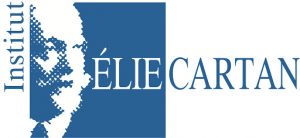AI-Driven Neural Operators for Modeling of Phase Transformations in Materials
6 months
Institut Jean Lamour (IJL) & Institut Élie Cartan de Lorraine (IECL), Nancy, France
Personnes à contacter par le candidat
miha.zaloznik@univ-lorraine.fr,
ludovick.gagnon@inria.fr,
benoit.appolaire@univ-lorraine.fr
DATE DE DÉBUT SOUHAITÉ
02/02/2026
DATE LIMITE DE CANDIDATURE
30/11/2025


Background
Phase transformations play a crucial role in the elaboration of metal materials. They determine the material’s structure, which, in turn, influences the properties of the final product. Phase-field models that describe phase transformations in materials are formulated by reaction-diffusion partial differential equations (PDEs). These models couple phase transformations to external fields such as temperature, chemical composition, stresses, and liquid flow.
Today, such PDEs are generally solved numerically with classical discretization methods (finite difference, finite element, spectral, etc.). Novel artificial intelligence methods for approximating solutions of PDEs have the potential to be much faster and thus to revolutionize the modeling of phase transformations. These methods provide surrogate models based on neural networks (NNs). Usually, datadriven supervised learning is used to train the NNs. However, such approaches require large datasets and struggle with predictions beyond the parameter range they were trained on (out of distribution).
To enhance performance, we combine two cutting-edge concepts: Physics-Informed (PI) unsupervised learning, which trains a surrogate model to satisfy the governing equations without requiring data, and Neural Operators (NO), NNs that directly learn the numerical scheme approximating the governing equations. The resulting PINOs (Physics-Informed Neural Operators) require less training resources and can be used for out-of-distribution predictions, making them a powerful surrogate for solving PDEs efficiently.
We recently developed a novel custom PINO approach for phase-field models, employing a bespoke Reaction-Diffusion NN architecture. The objective of the master thesis is to leverage this approach by fine tuning of its parameters and of the training strategy to achieve the best possible accuracy and generality of the predictions.
Objectives
The objective of the Master thesis is to extend the developed approaches in two ways
- To improve the accuracy of the PDE solution approximations by fine-tuning a dedicated neural network architecture.
- To explore training strategies and neural network architectures to enhance the generality of the PINO models, enabling them to make robust out-of-distribution predictions.